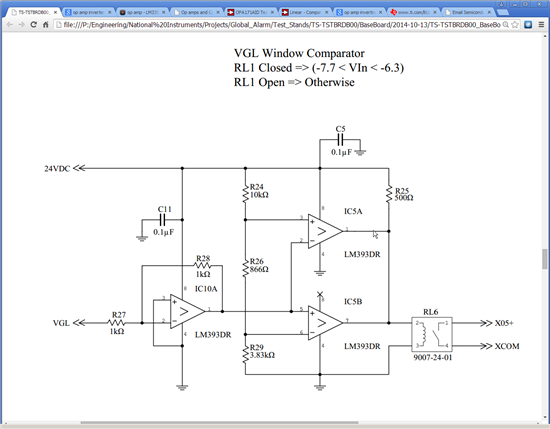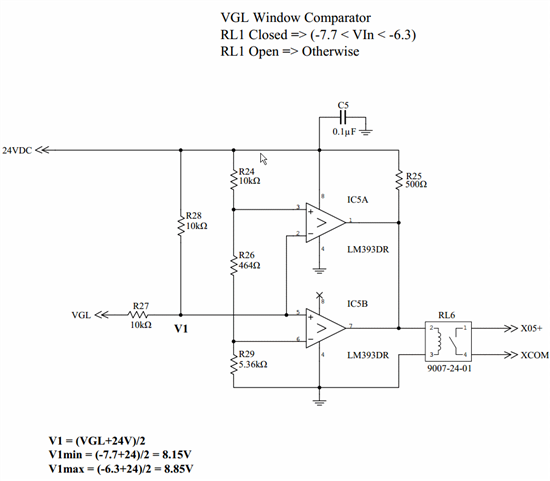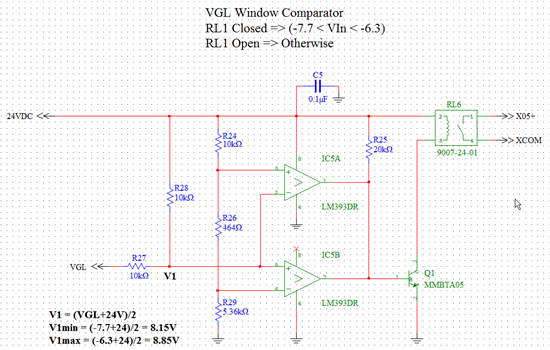The image above is my schematic. I want to invert the voltage VGL(which can be -7.7v to -6.3V) and use it to close a relay(RL6) if the voltage is within range. Is the component IC10A correctly connected with the two feedback resistors R27 and R28 to invert the voltage? I know the gain of IC10A should be -1 but when I connect up just the one LM393DR it does not invert the voltage at output pin 1. Am I missing a pull-up resistor on pin 1?
Thanks,
Thomas Meiswinkel





